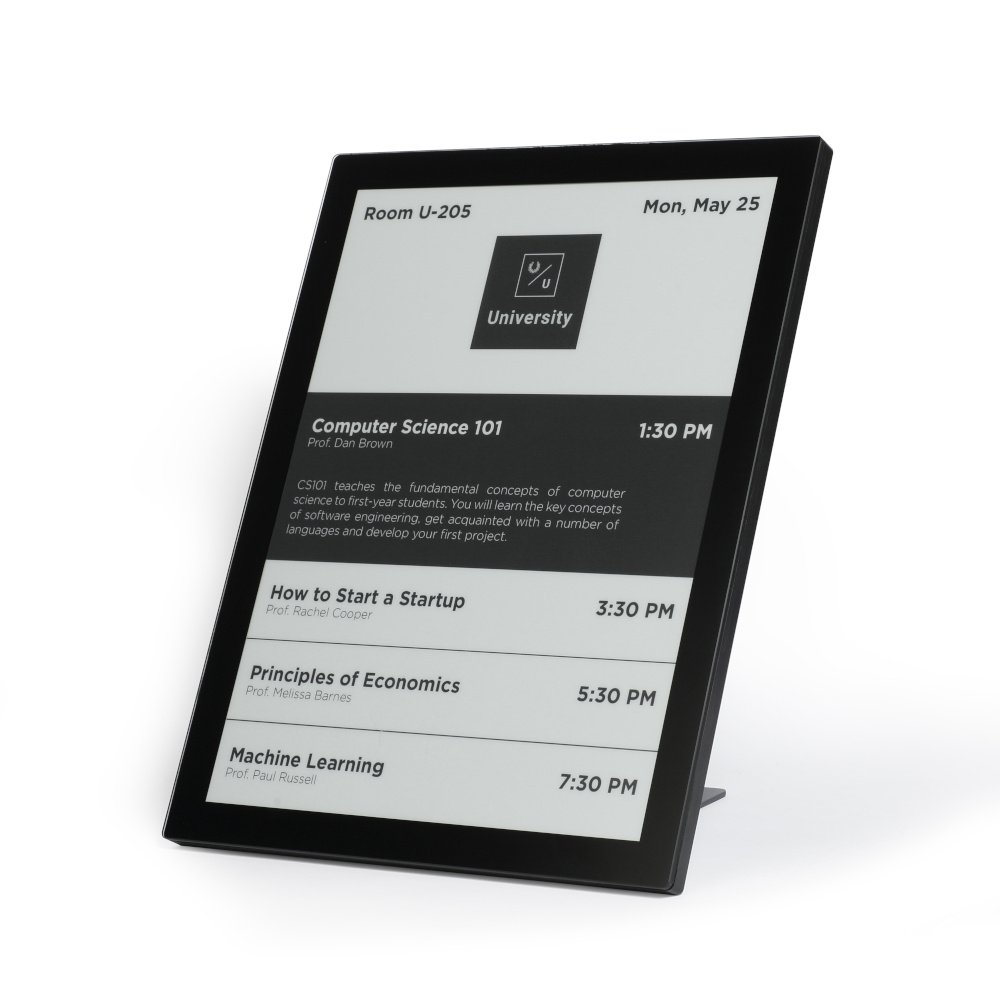What is an Electronic Paper Screen?
An electronic paper screen is a type of reflective display that reproduces the visual appearance of ink on physical paper. Unlike backlit displays, e-paper does not emit light directly. Instead, it reflects ambient light, making it easier on the eyes and viewable under bright sunlight.
The most widely used form of e-paper is E Ink technology, which relies on electrophoretic microcapsules. Each capsule contains positively charged white particles and negatively charged black particles suspended in fluid. Applying an electric field moves these particles to the surface, creating visible text or images.
Key Features of Electronic Paper Screens
- Paper-like readability: Ideal for long reading sessions without eye strain.
- Ultra-low power consumption: Power is only required when changing content.
- Thin and lightweight design: Enables use in portable and embedded devices.
- Wide viewing angles: Content remains clear from almost any direction.
- Sunlight readability: Unlike LCD or OLED, e-paper is perfectly viewable outdoors.
Types of Electronic Paper Screens
Monochrome E-Paper
- Displays black and white content.
- Common in e-readers like Kindle.
- Extremely low power consumption.
Color E-Paper
- Uses advanced electrophoretic or reflective technologies to display multiple colors.
- Applications include advertising, signage, and education tools.
Flexible E-Paper
- Built on plastic substrates instead of glass.
- Allows bending and integration into wearables or curved surfaces.
Advanced ePaper Technologies
- E Ink Carta™: Improved contrast and refresh rates.
- E Ink Gallery™: Supports full-color digital displays.
- Electrowetting Displays (EWD): A promising variant for faster refresh.
Advantages of Electronic Paper Screens
| Feature | Electronic Paper | LCD | OLED |
|---|---|---|---|
| Power Consumption | Extremely low | High | Moderate |
| Sunlight Readability | Excellent | Poor | Moderate |
| Eye Comfort | Very high | Moderate | Moderate |
| Thickness | Ultra-thin | Thicker | Thin |
| Color Range | Limited (improving) | Full color | Full color |
| Refresh Speed | Slow | Fast | Very fast |
While LCD and OLED dominate multimedia applications, electronic paper screens excel where readability, low power, and endurance matter most.
Applications of Electronic Paper Screens
E-Readers and Digital Books
The most familiar application is in e-readers like Amazon Kindle, Kobo, and PocketBook. These devices allow users to read for weeks on a single charge, thanks to e-paper’s efficiency.
Digital Signage and Retail Labels
- Electronic shelf labels (ESLs) in supermarkets.
- Dynamic price tags updated in real time.
- Low-power signage in airports and stations.
Smart Wearables
Watches and fitness trackers use e-paper for always-on displays without draining battery.
IoT and Industrial Applications
- Low-power IoT dashboards.
- Battery-powered meters and controllers.
- Outdoor signage in smart cities.
Education and Office Tools
- Digital notebooks like reMarkable and Boox.
- Paper-like displays for note-taking, sketching, and study.
Common Limitations of Electronic Paper Screens
Despite their advantages, e-paper displays have some challenges:
- Limited refresh speed: Unsuitable for video playback.
- Restricted color range: Color e-paper is improving but not as vivid as LCD/OLED.
- Higher initial cost: More expensive than standard LCD in many cases.
- Temperature sensitivity: Performance may drop in extreme cold or heat.
Engineers often weigh these trade-offs when deciding between e-paper and other display technologies.
Engineering Considerations When Using Electronic Paper Screens
When integrating electronic paper screens into a device, engineers must account for:
- Power Management: Ideal for battery-powered devices; requires optimized MCU and driver ICs.
- Interface Standards: Many e-paper modules use SPI or I²C for communication.
- Update Frequency: Devices should be designed for static or low-refresh applications.
- Environmental Protection: Coatings or enclosures may be required for outdoor usage.
The Future of Electronic Paper Screens
The e-paper market continues to evolve, with exciting innovations ahead:
- Faster Refresh Rates: Bridging the gap with LCD and OLED.
- Full-Color Displays: Advanced technologies like E Ink Gallery Plus are already entering commercial use.
- Flexible and Foldable Designs: Enabling integration into next-generation wearables and smart surfaces.
- Sustainability Benefits: Low power consumption aligns with eco-friendly initiatives in smart retail and cities.
- Integration with AI and IoT: Intelligent signage that updates dynamically based on data.
According to market research, the global electronic paper screen industry is expected to grow significantly as e-paper expands beyond e-readers into education, industrial, automotive, and consumer electronics.
Conclusion
The electronic paper screen is more than just a display technology—it is a bridge between the digital and physical reading experience. Its paper-like readability, exceptional energy efficiency, and adaptability to different industries make it a compelling solution in an increasingly mobile, connected, and eco-conscious world.
While challenges such as refresh speed and color limitations remain, continuous advancements are expanding its capabilities. From e-readers to IoT dashboards, from digital price tags to flexible wearables, electronic paper is proving to be an indispensable part of modern display technology.
As engineers, designers, and businesses explore display options, the electronic paper screen stands out as a future-ready, sustainable, and human-friendly choice.




